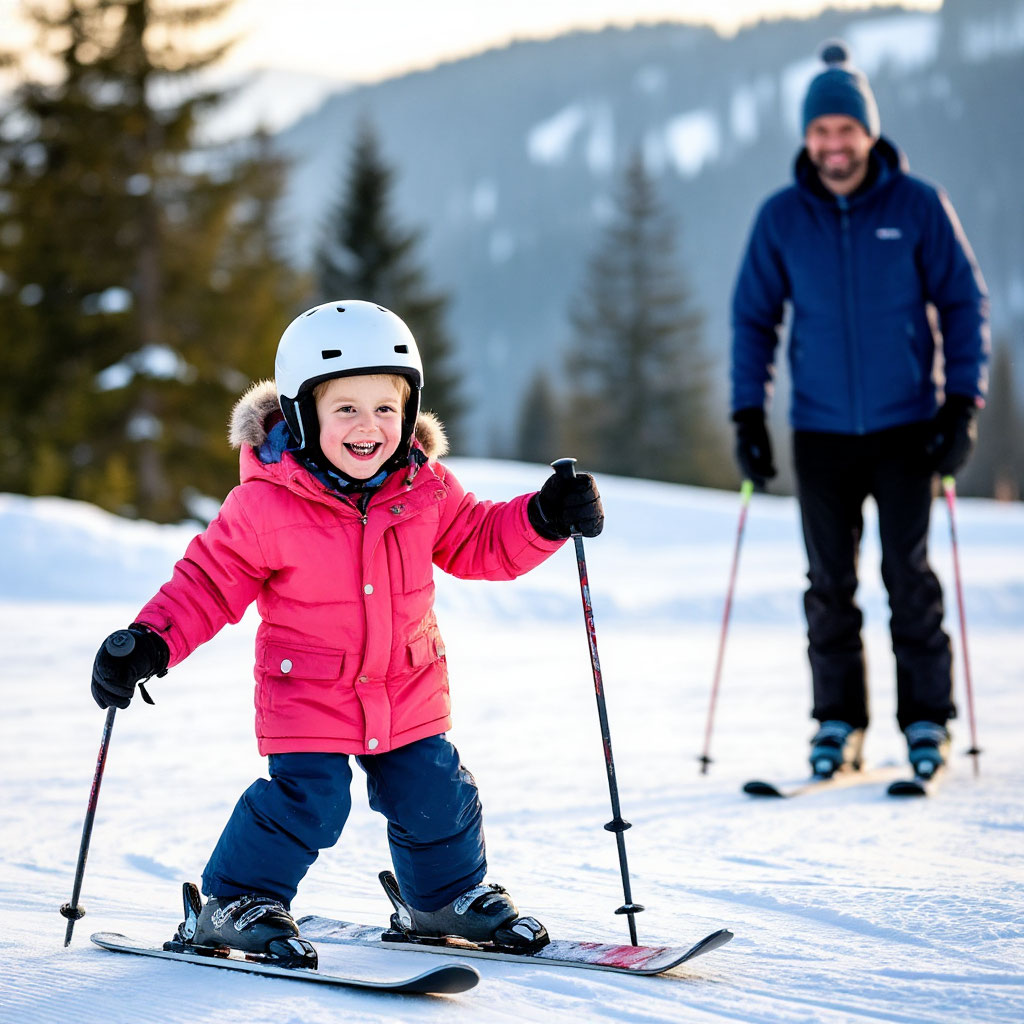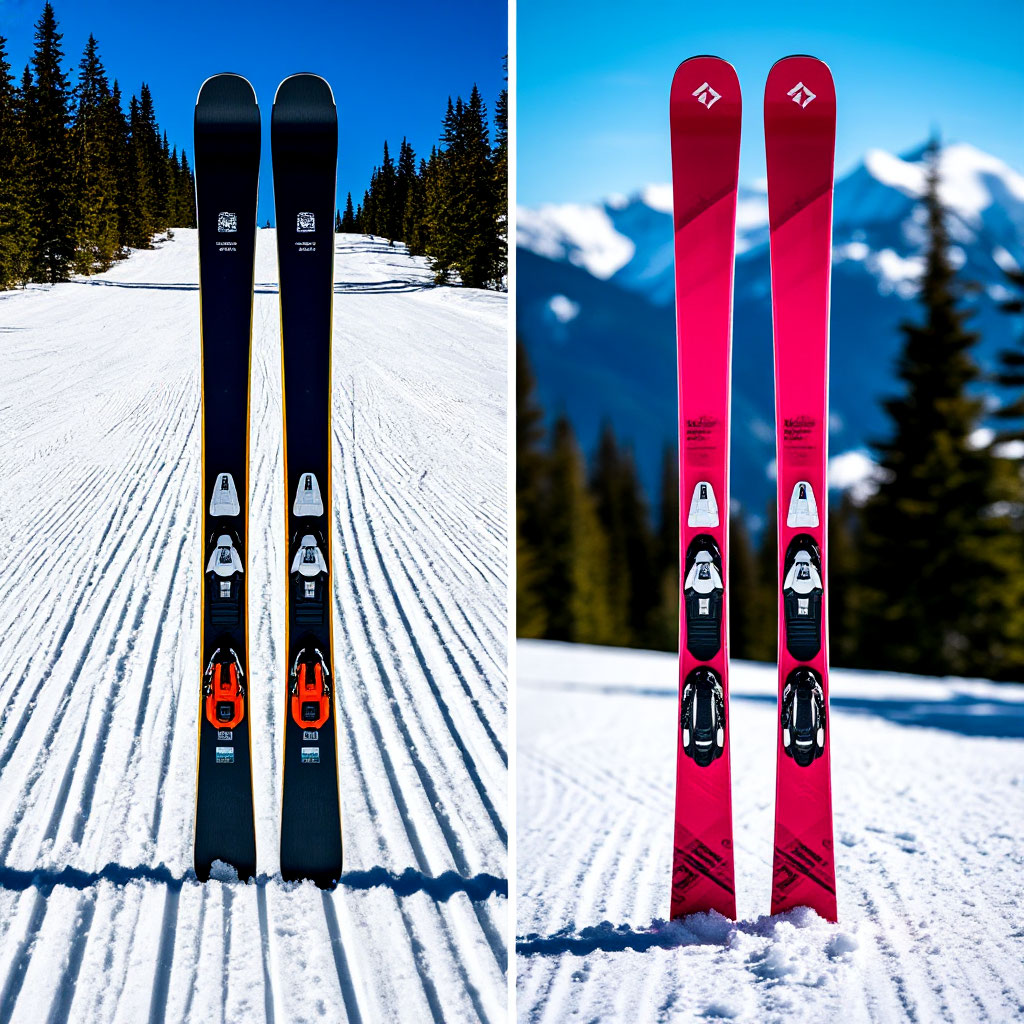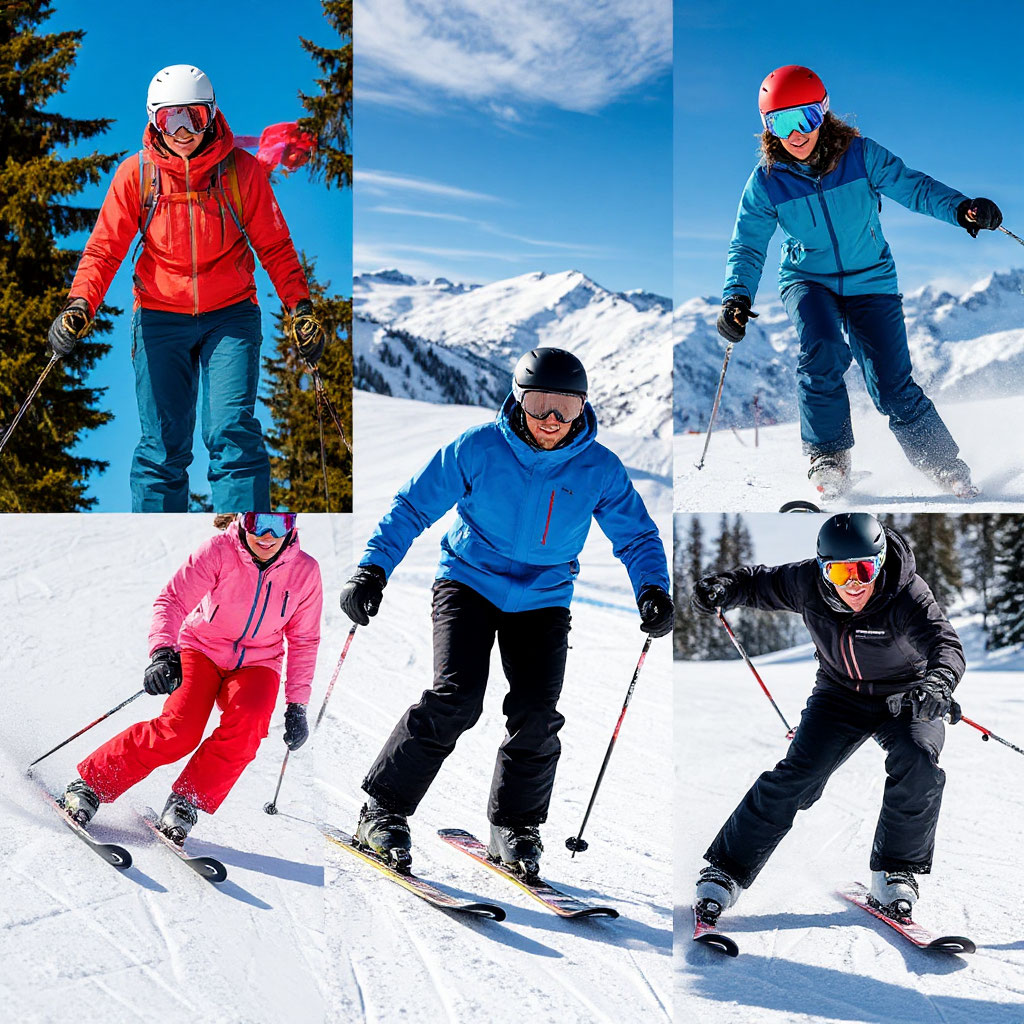Choosing your first pair of the best beginner skis can seem overwhelming. There are so many shapes, sizes, and technical terms to consider. But once you learn all the ins and outs, you’ll be able to find skis that suit your skill level and terrain preferences. Whether you prefer smooth, groomed runs or dream of deep-snow adventures, understanding how to choose the right skis will help you make an informed decision. What are the differences between all-mountain and all-snow skis? What are the features of beginner models? When are specialized designs used?

How to Choose the Perfect Skis for Your Skill Level
Choosing the best beginner skis involves balancing performance with ease of use. You want models that will help you see progress in your winter sports. First, focus on the skis. They complement your current abilities and the terrain you enjoy most.
Beginner Ski Characteristics
The best beginner skis are soft and flexible. This makes them forgiving when initiating turns. A narrower waist (65-85mm) improves control on groomed pistes, but a hybrid of rocker and camber improves maneuverability. These are all important factors to consider when learning to choose the right skis.
Finding the Right Fit
The ideal ski length depends on the height of the skier and their skill level. A general rule for beginners is to choose skis that are between your chin and nose. Shorter skis are comfortable for turning. Longer skis provide stability at speed. This is another important aspect of choosing the right skis.
Common Mistakes to Avoid
One of the mistakes beginners make is jumping straight into advanced skis. Instead, prioritize ease of use. Opting for soft, mid-width options ensures a smooth learning curve. Avoid choosing based solely on graphics. Functionality is equally important when choosing the best skis for beginners.

All-Mountain vs Powder Skis: Which Do You Need?
Understanding the difference between all-piste skis and powder skis is key to choosing the right tool for your preferred terrain.
All-Purpose Skis: All-Purpose Versatility
All-Purpose skis vs. powder skis come down to versatility. All-Purpose models (80-100mm underfoot) handle groomed slopes, moguls, and light snow well. This makes them ideal for beginners and intermediates.
Powder Skis: Built for Deep Snow
If you often ski off-piste, powder skis (100mm+ underfoot) provide a bit of “floatability.” Experienced skiers find that they are less maneuverable on hardpack. This is something to keep in mind when choosing the right skis.
Key Differences at a Glance
| Feature | All-Mountain Skis | Powder Skis |
| Width | 80–100mm | 100mm+ |
| Best For | Groomers, mixed conditions | Deep snow, off-piste |
| Flex | Medium | Soft to medium |
| Turn Ease | Good on hardpack | Less responsive on firm snow |
| Stability | Balanced | High float in powder |
If you’re new to skiing, all-mountain skis are a safe bet. They’re easy to adjust to specific conditions without requiring complicated technique. Research different models to see what suits your style before making a choice.

The Best Ski Brands for Beginners & Intermediates
When looking for the best skis for beginners and intermediate skiers, brand reputation is as important as performance. To understand how to choose the right skis, you need to look at manufacturers that specialize in comfortable designs ranging from all-mountain to powder skis. What are some recommendations from leading brands of skis for intermediate skiers that provide quality without overwhelming beginners?
Rossignol: Reliable and Comfortable
Rossignol’s Experience series stands out among the best skis for beginners. It has predictable characteristics that build confidence. These models excel when considering the factors of choosing the right skis. They are:
- Maximum flexibility and maneuverability.
- Suitable for learning to turn.
- Remain stable at speed.
Their durable construction means they will serve you well over several seasons of progression.
K2: Balanced Performance
K2’s Mindbender series is the middle ground in the all-mountain vs powder ski debate. With a versatile waist width of 85-95mm, they excel in a variety of conditions. This factor is included in any terrain ski width guide because it is important for athletes. The medium flex provides intermediate skiers with the ability to develop their carving skills without intimidating beginners.
Atomic: Light and Maneuverable
Atomic’s Bent series consistently ranks high among the leading brands of intermediate skis thanks to its innovative construction. These skis show how modern materials can improve the best beginner skis. They offer easy maneuverability without sacrificing performance. Their rocker-camber profile provides the float needed for off-piste skiing, while remaining maneuverable for groomed pistes.

Ski Width Explained: What Works Best for Your Terrain?
Taking terrain into account is key to choosing the best beginner skis.
Narrow Skis (65-80mm) for groomed pistes
Ideal for carving and hardpack. These are the best skis for beginners who stick to the resort pistes.
Medium Skis (80-100mm) for All-Purpose Use
A versatile choice that combines groomed performance with off-piste capability. Ideal when you’re unsure of how to choose the right skis.
Wide Skis (100mm+) for Powder
Best for deep snow, but less responsive on firm surfaces. Only consider these if you ski powder frequently.
The best beginner skis are based on ease of use and terrain suitability. Whether you’re comparing all-mountain skis to powder skis or researching the best brands of intermediate skis, focus on what helps you progress. Analyze different models to find your perfect pair. Your ideal skis will evolve as your skills improve.
Tags: Gear, Skis